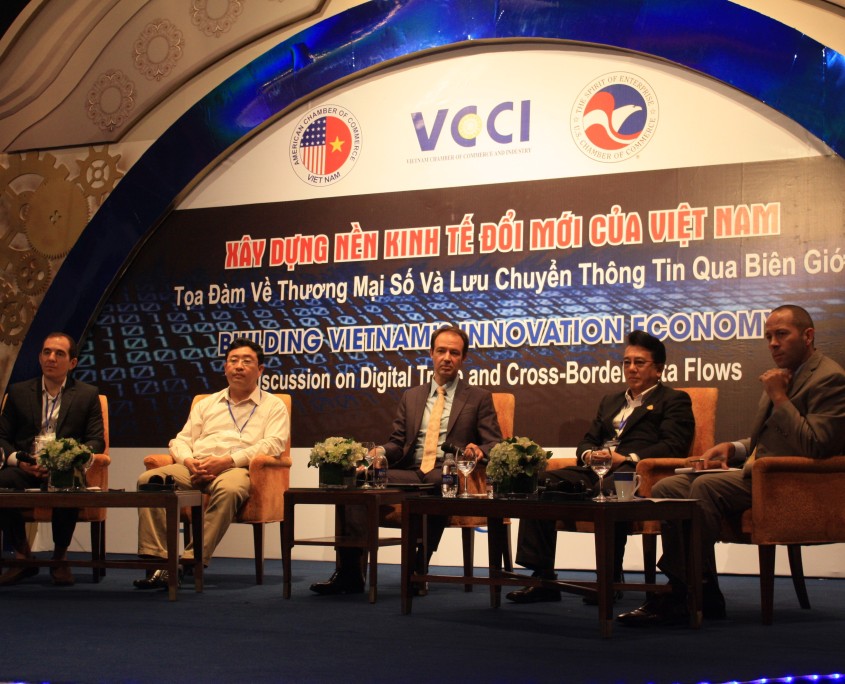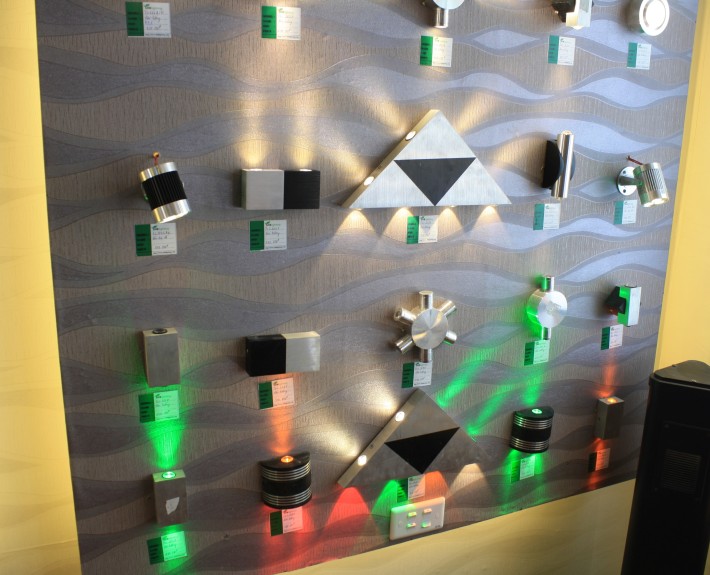In our last post, we outlined the IPP, explained its goals, and touched upon some of the challenges ahead for the program’s stakeholders. This week we are going to take a deeper look at the IPP and the cultural, comparative, and collaborative challenges ahead for the program in Vietnam.
Last weekend we sat down with Chris Zobrist, the Senior Innovation Partnerships Expert at the IPP, and he shared his thoughts on operating in Vietnam, the potential for entrepreneurship and innovation on a local level, and how the IPP factors into the changing landscape in Vietnam.
- Can you share a bit about yourself? What’s your background, your role in your organization, and where are you located?
CZ: I’m currently working as Senior Innovation Partnerships Expert for IPP, which is a joint program funded by the Foreign Ministry of Finland and the Ministry of Science and Technology of Vietnam. My background is as both an entrepreneur, having started many businesses over the last 15 years, as well as an entrepreneurship educator, spending part of my time teaching entrepreneurship and developing curriculum in several universities in Vietnam.
- What kind of opportunities do you see in Vietnam over the next five years?
CZ: Vietnam has a lot of talent, especially in engineering and software development, and there are already a few high-growth companies as well as local start-ups planting entrepreneurial seeds here.
- What’s the best way to establish trust with Vietnamese business counterparts?
CZ: It depends a lot on the individual with whom you are trying to build a relationship, specifically in terms of their background. Generally, the best way to get to know someone is through someone they already know and trust, as in many cultures, Vietnamese really value social capital, and this can be transferred from one person to another through a proper introduction. Besides introductions, sharing meals, and drinking together are also good ways of building trusting relationships which is an essential element of working together.
- What’s the biggest difference between American and Vietnamese mentalities?
CZ: Coming from a developed country that churns out high quality products as well as infrastructure (roads, public buildings, etc), Americans as well as people from other developed countries have a natural expectation to see and make things at a high standard of quality. Vietnam is still a developing country, so many things are made with what little resources were available, and so the expectation for quality coming from domestically produced goods is not high.
- What’s the hardest part about doing business in Vietnam?
CZ: Ensuring high quality standards.
- Do you have a favorite quote?
CZ: “I’m all for progress, it’s change I object to.” – Mark Twain, I like this quote because it is the most apt description of the greatest challenge facing entrepreneurs and innovators in almost every context, and especially true in a country like Vietnam.
- What are the biggest differences between Hanoi and Saigon in terms of doing business?
CZ: Saigonese are generally much more open to new people and ideas, as long as there’s a clear opportunity and logic in place. Hanoians are much more conservative, so even if they are presented with an attractive opportunity, they will be reluctant to mobilize the needed resources to capitalize on it.
- What are the necessary attributes to succeed in Vietnam?
CZ: Social networks and building trusting relationships are keys to success in Vietnam.
- Do you have any advice for expats/locals who want to be entrepreneurs in Vietnam?
CZ: Entrepreneurship is a team effort, so if you want to be successful, you need to learn how to network and collaborate with others to get things done.
Entrepreneurship, Innovation, and the IPP
During our discussion, Mr. Zobrist made it clear that the IPP is looking for people who have the necessary motivation, connections, and capacity to scale a company globally. That means that local companies will eventually have to implement international accounting standards, utilize English as an official working language (especially if looking to raise funding from foreigner investors), and clearly communicate a company’s Unique Selling Proposition (USP) across markets and cultures (differentiation).
While it might sound challenging, what the IPP is seeking to achieve isn’t impossible because it’s already been done before in Japan. Mr. Zobrist pointed out that Japan went from a ravaged post-World War 2 economy to the world’s second largest economy in the 1990s. What enabled Japan to be successful in its economic transformation was a stark shift in the workforce mindset, which even facilitated new vocabulary to implement innovative solutions.
Before this paradigm shift in Japan, specific industry terms did not exist to describe small batch, high quality production to factory workers. The Japanese created their own processes with their own resources to drive economic growth in 20 years; Japanese engineers, managers, and leaders took innovative ideas, applied them to manufacturing and processes and the result was innovative products from brands such as Sony, Honda, and Toyota. Thus, the development of a new technical language was necessary, which involved a social level (individuals, units, company culture, etc.) of change in innovation, and ultimately led to a change in output of manufacturing (lean manufacturing).
Vietnam currently has a similar language challenge ahead of it; for example, the terms doanh nhân and doanh nghiệp can mean “entrepreneur” or “businessman” and are used interchangeably (and sometimes ambiguously) in Vietnamese. Along those same lines, sáng tạo means “creation” while đổi mới means “renovation” so combining the two (sáng tạo đổi mới) is the closest meaning to “innovation” (literally “creative renovation”) in Vietnamese. The language will have to evolve in order to reflect the high standards and creative thinking that are necessary to maintain a competitive advantage in the global marketplace.
An ecosystem like Vietnam’s needs both entrepreneurship and innovation in order to foster the creation of high growth and innovative companies with a global outlook. If a company chooses to keep the status quo then it will stagnate, or worse, die. Copying existing models can be valuable, yes, but not nearly as valuable as new ideas that lead to the creation of value for a large number of customers or stakeholders. High growth companies are innovative and innovation requires change–there is no getting around this fact.
New language can shape new segments of a culture and creating new and/or dedicated Vietnamese words for entrepreneurship and innovation will allow the exchange of new ideas more efficiently and also help to facilitate a change in mindset–goals that the IPP hopes to realize once its integrated system is fully operational (good inputs producing good outputs).
The IPP seeks to perfect the way of building innovation systems in order to turn them loose and harness the innovative and entrepreneurial resources here in Vietnam. Then, the IPP can develop iteratively by building and expanding on foundational knowledge (training individuals and teams who can then train other individuals and teams and so on). In short, the IPP is building a Minimum Viable Product (MVP), learning from the outcomes, and making the necessary changes (quickly and fully) in order to make the process of creating high growth and innovative companies more effective and efficient in the future.
When the first phase of IPP finished at the end of 2012 there were some major lessons that were learned, leading to a promotion of transparency, accountability, and momentum for IPP Phase 2 (which began in January). This public-private partnership, comprised of a core curriculum and fellowship program, will eventually fully integrate entrepreneurship and innovation–but this process will require time, talent, and commitment at the individual, community, and governmental levels if it is to succeed in its mission.
Toward the end of our conversation, Mr. Zobrist pointed out that the IPP will have its final evaluation in 2018 but for now, the short term focus is on capacity building and making grants available to suitable applicants in this “wilderness stage.” However, the first significant indicators of progress could be as early as the end of this year or in early 2016 as the Fast Track training draws to a close and the New Innovative Companies are eligible for external funding on Demo Day.
With approximately 200 Expressions of Interests submitted to the IPP for New Innovative Companies, we look forward to seeing what kinds of teams are selected for the IPP–and more importantly, what kinds of teams, trends, and lessons emerge from the other side of the Fast Track Training.
Thanks to Chris Zobrist for sharing his time with us.


























































